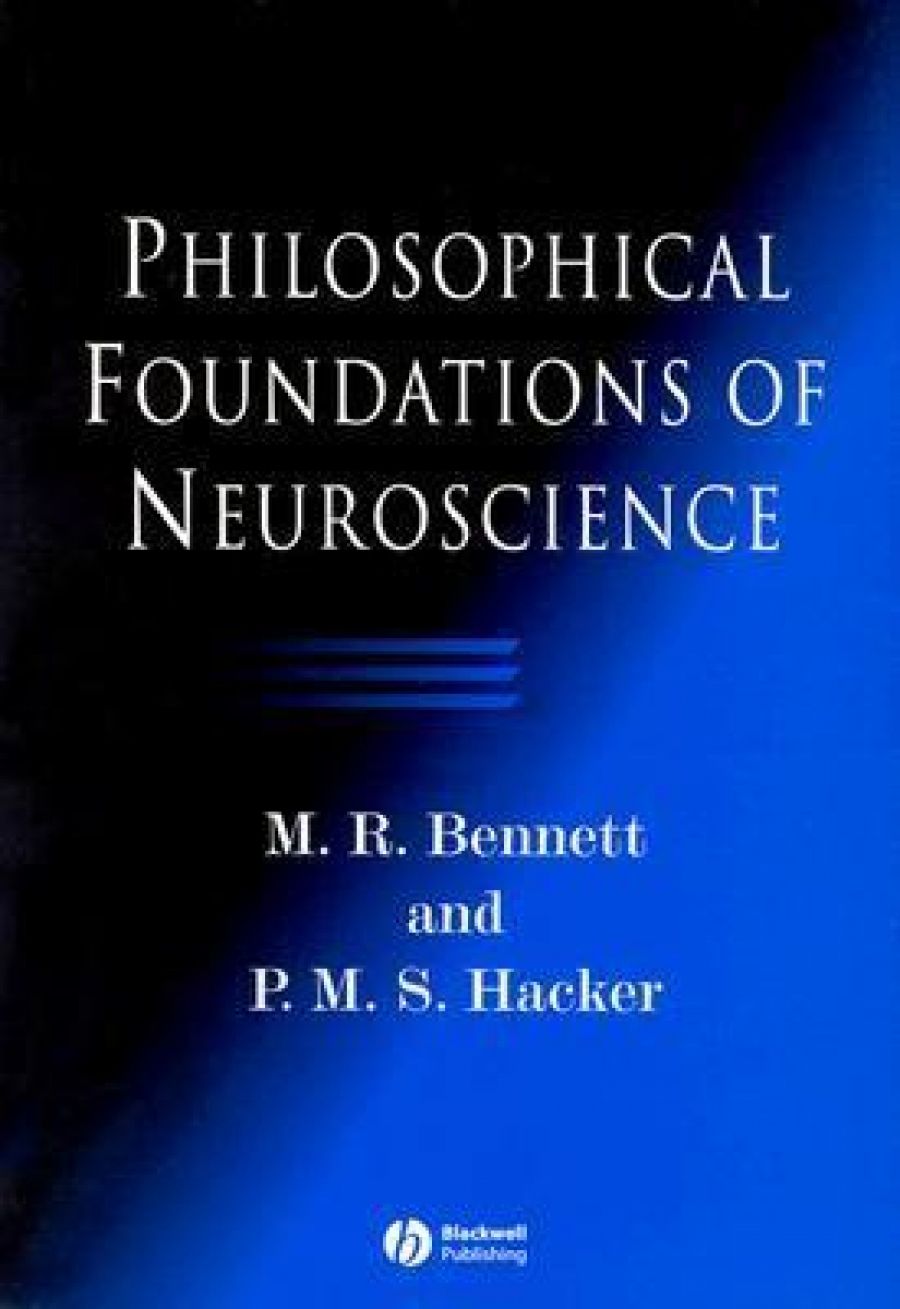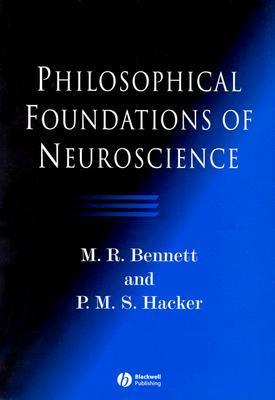
- Free Article: No
- Contents Category: Neuroscience
- Review Article: Yes
- Article Title: Marriage of Minds
- Online Only: No
- Custom Highlight Text: This book is a joy to read. It is the fruit of collaboration across disciplines and continents between a neurophysiologist and a philosopher. They have written a polemical work that is a model of clarity and directness. Distinguished neurophysiologist M.R. Bennett, of the University of Sydney, and eminent Oxford philosopher P.M.S. Hacker have produced that rarity of scholarship, a genuinely interdisciplinary work that succeeds.
- Book 1 Title: Philosophical Foundations of Neuroscience
- Book 1 Biblio: Blackwell Publishing, $69.95 pb, 477 pp
- Book 1 Cover Small (400 x 600):

- Book 1 Cover (800 x 1200):

Its central argument will be familiar to philosophers. Neither minds nor brains speak, write, think or consider. If I say ‘Use your brain’ or ‘Speak your mind’, I am talking figuratively, addressing whole persons about whole persons, not neural pathways about synaptic connections. The authors elaborate this argument across the fields of neuroscience, cognitive science and philosophy of mind. Their approach, which relies on Wittgenstein’s clarification of philosophical problems through an analysis of ordinary language, is controversial. The authors do not duck the controversy.
They divide their work into four sections. The first traverses historical theories of action, brain and mind from Aristotle to modern neuroscience. The second deals with the mental faculties of sensation and perception, cognition, cogitation, emotion and volition. The third discusses consciousness, and the fourth, bearing the allusive title ‘On Method’, argues with opponents, particularly reductionists.
At the centre of the first section is an argument that neo-Cartesianism suffuses modern neuroscience. Attributes ascribed by Descartes to the mind are now ascribed by many neuroscientists to the brain. They assert that the brain thinks, reasons, imagines, infers, desires, concludes, maps, represents and intends. The authors call this the mereological fallacy – the ascription of attributes to part of the person that are properly ascribed to the full person. It is, as they show in the last section, associated with a form of reductionism that regards the brain as the mind.
Bennett and Hacker adopt the Aristotelian view of the psukhç or soul as capacities which, in the case of human creatures, exhibit themselves in intelligence, emotion and the various activities that we now attribute to the mind. This accords well with the Wittgensteinian argument that follows, but also puts into context the work of Galen, Aquinas, Fernel, Descartes and Willis in the brief history of brain investigation that brings us to Sherrington and modern research.
If the mind is the exhibition of capacities, then there is no need to postulate an immaterial mental substance that interacts with material stuff such as brain cells. Descartes’ dualism, which separated the immaterial substance of the mind from the material body, has its modern counterparts in brain–body dualism. Here the brain is substituted for the mind, so that what were formerly spoken of as mental representations or mental maps are now called by modern neuroscientists – and not just figuratively – representations or maps in the brain. In other words, modern scientists seem no less prone to multiplying entities than their philosophical forebears.
This leads to the generation of mysteries, avoidable perplexities and, potentially, to confused research agendas, such as the solution of the binding problem. This is the problem of how the brain combines all the various information about shape, colour, motion and so on into a vision of an activity. It is postulated that there must be a mechanism in the brain that controls this integrative function. Bennett and Hacker take a Wittgensteinian position in dealing with such questions, and it is wonderful to see it used to such effect. Here they point out that the brain does not reconstruct a picture of the world through some postulated binding mechanism: seeing requires normally functioning eyes, nerves and brain, not a film production studio that takes, cuts and reconstructs pictures of some putative external world.
So it is not the spurious multiplication of entities that worries the authors, but that many assumptions of neuroscience, such as the privacy of consciousness and the privileged access of individuals to the contents of their consciousness, simply do not make sense.
The authors are aware that their carefully elaborated argument could seem an exercise in semantics to some, and they argue that their real objective is to provide guidance through the modern labyrinth of neuroscientific questions. They certainly succeed in the task of leading readers through a wealth of detail and argument. They engage directly with cognitive scientists and philosophers on questions of expression and sense, ordinary language and intelligibility, and the nature of philosophy. So there is much for the non-specialist reader here. This book on neuroscience is also an overview of argument in philosophy of mind.
A benefit of collaboration is the intermingling of philosophical argument and good sense. Considering the question ‘What is consciousness for?’, Bennett and Hacker conclude: ‘If we are trying to pinpoint areas of scientific ignorance, it is sleep and its necessity rather than being conscious or awake, that is puzzling and demands explanation.’
This partnership of physiologist and philosopher contains a nice irony. Many neuroscientists and philosophers believe that science and philosophy are continuous enterprises separated provisionally by dividing lines that shift, as Searle would argue, with conceptual clarification. In rejecting the assimilation of philosophy to science, Bennett and Hacker have produced a work that required the skills of both. It is beautifully written and produced, with few errors.(One is the placement of Vesalius at the University of Louvain in 1503, eleven years before his birth.) This is a wonderful book that will illuminate, provoke and delight professional scientists, philosophers and general readers alike.


Comments powered by CComment